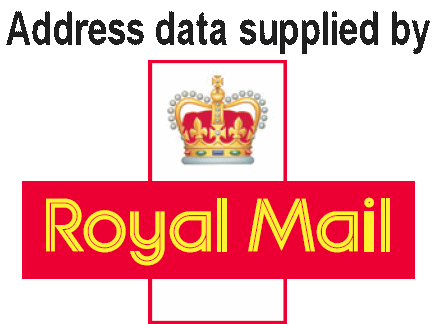Postcodes have existed in the UK for over 50 years now. It’s hard to imagine how our postal service operated before they existed. But how many of us truly understand what our postcode means or the importance when sending things in the post?
There’s nothing more frustrating than your post going missing, especially if you’re a business that sends out products it can waste time, money and resources trying to fix failed deliveries and find missing post. But it can easily be avoided.
When sending mail to a UK address you need to provide a full and accurate address, complete with postcode. The purpose of the postcode is to enable the Royal Mail to sort your post quickly and accurately.
In this blog post we show you how UK addresses and postcodes are structured so you can make sure you maximise the chances of a successful delivery.
The UK Address
Below is a breakdown of each part of your address:
|
3X Software Ltd |
(Addressee Name/Business Name) |
|
Suite 3, Penrhos Manor |
(Building number/name) |
|
Oak Drive |
(Street name) |
|
Colwyn Bay |
(Postal Town) |
|
Conwy |
(County) |
|
Wales |
(Country - only required for international post) |
|
LL29 7YW |
(Postcode) |
Addressee Name/Business Name
We need to know who your post is going to so the first line should always be the addressee. If your post is going to a business you might just use the business name.
Building Number/Name and Street Name
The next line of the address is the building name or number and the street or road name.
If your property has a name, it is most commonly entered as a standalone line before the street name. For example:
3X Software Ltd Headquarters,
Oak Drive,
Etc.
Be aware that in the UK not all buildings or houses have numbers, some only have house names and some might have both a name AND a number! Usually if the address is numbered the street name is on the same line of the address. But if it only has a name it’s on a separate line from the street name. Take a look at the example below to see what we mean.
|
23 Princes Drive, |
Penrhos Manor, Oak Drive |
Postal Town, County and Country
Next you need the postal town of your address. Make sure you include this as there are lots of duplicated street names in the UK. Equally important is the county. Counties are geographical and administrative sub-divisions of the UK. Many English countries end in -shire which is the older historically equivalent word for a county.
And did you know that the United Kingdom is actually made up of 4 countries: England, Scotland, Wales and Northern Ireland? If you’re posting from outside of the UK you’ll need to add the country but domestic post doesn’t require the country.
|
Colwyn Bay |
(Postal Town) |
|
Conwy |
(County) |
|
Wales |
(Country) |
The Postcode
The numbers and letters which make up a postcode may seem random at first, but each is significant and vital to differentiating addresses accurately.
The 3 sections represent your area, district and street in order to make your location easily identifiable via postcode lookup. Usually the postcode is split into 2 parts. The first and second section are written together then there’s a space before the last section.
Here’s a breakdown of each section of a UK postcode:
|
LL |
The first 1 or 2 letters represent the postcode area that you live in |
|
LL29 |
The second part indicates the postcode district that you live in |
|
LL29 7YW |
The final part of the postcode identifies the unit/Street that you live in |
Common Address Mistakes
Common mistakes include putting your postcode before your county, or melding two separate address categories into one like, like so:
3X Software Ltd,
Suite 3, Penrhos Manor,
Oak Drive
Colwyn Bay, Conwy,
LL29 8HT
It might not seem important but incorrectly formatted addresses can cause problems in delivery so make sure you’re as accurate as possible when addressing post.
Still not sure about UK addresses?
Did you know The Royal Mail keeps all its addresses in their Postcode Address File database (known as the PAF) for short. Between four and five thousand records are updated each day, making it by far the most reliable UK address database system. At the time of posting the database holds over 1.7 MILLION postcodes and over 31 MILLION delivery points.
Addresses and postcodes can be unnecessarily complicated but Postcodes4U provides a simple solution. If you need further information about postcodes, or want to check addresses against the most reliable address database in the UK, visit www.postcodes4u.co.uk.
We utilise the Royal Mail's Postcode Address File in order to provide the most up-to-date and accurate address information available in the UK.
We also create easy to use plugins for e-commerce platforms and provide solutions that ensure your business is always able to use the most accurate up to date address information.
Find out more here and try it out for free with 30 free search credits to get you started.

